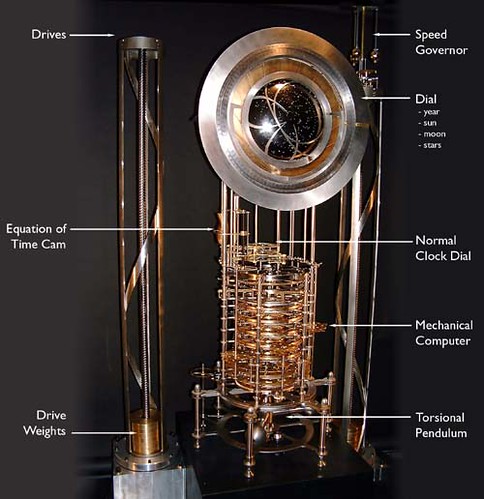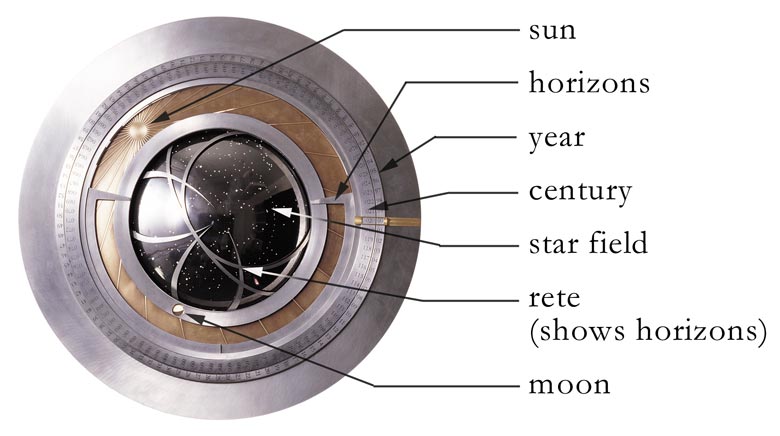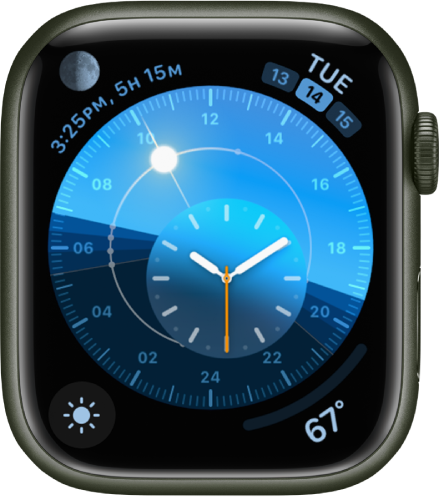Memento Clock¶
24 hours clocks are cool, and actually make a lot of sense don’t they?
Background¶
Most clocks now are 12-hour analog clocks or digital clocks. Boring.
Why is time based on 12 anyways?
UK shepards 24 hour clock
I’ve always liked being able to see time spatially on an analog clock, but being kinda OCD I also liked the precision of digital clocks. The best compromise is a radio controlled analog clock, with time set from an atomic clock source.
Current Solutions and Prior Art¶
In my research I’ve found some interesting projects that are along the lines of my inquiries into the nature of representing and perceiving time.
The Clock of the Long Now¶


Credit: Long Now Foundation
Apple Watch “Solar Dial” watch face¶

Credit: Apple
Slow Watch¶
24-hour single hour hand watches
![]()
Credit: Slow Watches
Art & Motivation¶
Memento Mori - Remember death
Stoicism concept
Remember to breath - be present
Remember the day - rise and rest with the Sun; be in tune with nature Healthiest is to sleep well
Long term thinking
The ultimate “supply-side time management” is how will you spend your life’s time… your lifetime
Not even guaranteed you will get 80, 90, 100 years to live
Year 2100 is the end of the clock.
If we don’t deal with climate change, this is all the time ALL of us get. 3deg celcius rise in global mean temp will be a nasty world to live in.
What do you want to do, what do you want to make in your lifetime?
Hopefully we as a species make it to 2100, and my open source design files for this clock gets updated in the Fab Ecosystem, after my time… and someone else makes a 2200 version!
Engineering Objective¶
Democratize access to the Clock of Long Now into people’s living rooms. Combine with electronics-enabled features (like Apple Watch Solar Dial) into a beautiful timepiece for the home.
Remove overcomplicated engineering requirements from Long Now¶
- Last 10,000 years
- Long-term energy source from periodic human winding
- Purely mechanical for maintainability
- Use natural processes for time accuracy
Simplify engineering requirements with Fab Lab tools¶
- Last 100 years
- Assume stable power source from grid or battery swaps
- Leverage embedded systems and Fab Ecosystem for modern features and upgradability
- Rely on internet time for accuracy and resets
Useful features that can be added (ideas)¶
- Visual solar time with sunrise and sunset
- Weather forecast for day
- Connected Earth globe with sensors for user to input Lat/Long.
- Storyboard: move globe marker to India, see solar time and real time at friend’s location, maybe current local weather
Design¶
What about leap years? Honey badger, i mean Month hand doesn’t care Gear it to 365.25 days in a year, month hand will drift slightly backwards, but every 4th year the extra day in Feb will push it exactly back to the tick mark for the start of March. Error in angle may be so slight people may not even notice.
In the year 2800 CE, the Gregorian and Revised Julian calendars will begin to differ by one calendar day.[3] https://en.wikipedia.org/wiki/Year
We should be good, plenty accurate til 2100.
Gearing¶
Hour hand revolves once per day (24 hours), Month hand revolves once per year (365.25 days), Year hand revolves once per century (100 years).
1:365.25 = 4:1461
In whole numbers, gear ratio between hour hand and month hand needs to be 4 teeth on the driving hour hand gear to 1,461 teeth on the final driven gear of the month hand. Using a gear train to compress the relative sizes, 3 or 4 sets of gears may be needed to achieve the target total gear ratio.
Programming¶
Invent my own Unix time, “Memento time”.
Memento time is the number of hour hand degrees (on a 24-hour analog clock) that has elapsed since the Memento epoch.
The Memento epoch is 00:00:00 UTC on Jan 1, 2000. Every day is 360 degrees. That means every hour is 15 degrees, and 1 degree is 4 minutes.
Since 1 degree is 4 minutes, it should be even easier to manage data wise over a long period compared to Unix time which increments every second! (Unix time will overflow in 2038 for 32-bit systems!!)
For actually driving the hour hand, the code may have to interpolate between a 4 minute Memento time degree to give the hour hand a smoother motion. Still need to figure this out, make Memento time a float/double variable with 0.1 degree increments or .... ? is data size really an issue to last to year 2100?
Example of Memento time:
The first ever Learn to Make (Almost) Anything class at MIT in Cambridge, Massachusetts started at:
HH:MM, dd, mm, 2001 EST
In Memento time, this is _______ degrees.
Using Memento time will be easier to reset the Memento clock to the right positioning for hour, month, and year hands. i.e. in case of power outage. Grab internet time for a given location, convert to Memento time, adjust hour hand servo with the delta in degrees and then can be sure the month hand and year hand are in the correct positions too. (If properly zero’d when first set up)
Current hour hand position should be stored in non-volatile memory in case of power loss. When MCU boots up again, it should be able to know where the hour, month, and year hands are based just on the Memento time it saved last.
Do servo position sensing drift?
Need continuous servos, but they can only control speed.
Use stepper motor instead.
¶


Optimize for energy efficiency¶
Stepper motors use full power all the time.
Can be more efficient with small motor, and encoder for closed-loop feedback of angle position.
Accuracy¶
Do I need to add an encoder? Perhaps simpler cheaper solution is some sort of limit switch that calibrates with one rotation of the hour hand is sufficient. https://www.reddit.com/r/AskEngineers/comments/3sx44x/are_rotary_encoders_necessary_for_accurate/
Spiral 1¶

/*
Notes to self¶
Propose a final project masterpiece that integrates the range of units covered,
answering:
What will it do?
tell 100 years of time
Who's done what beforehand?
clock of long now, apple watch solar dial, slow watch
What will you design?
analog 24 hour clock with 2 additional concentric dials- a month hand, and a year hand going to 2100
What materials and components will be used?
wood, plastic, aluminum, LED lights, servo, MCU, PCB
Where will come from?
How much will they cost?
What parts and systems will be made?
What processes will be used?
What questions need to be answered?
How will it be evaluated?
Your project should incorporate 2D and 3D design,
additive and subtractive fabrication processes,
electronics design and production,
embedded microcontroller interfacing and programming,
system integration and packaging
Where possible, you should make rather than buy
the parts of your project
Projects can be separate or joint, but need to show individual
mastery of the skills, and be independently operable